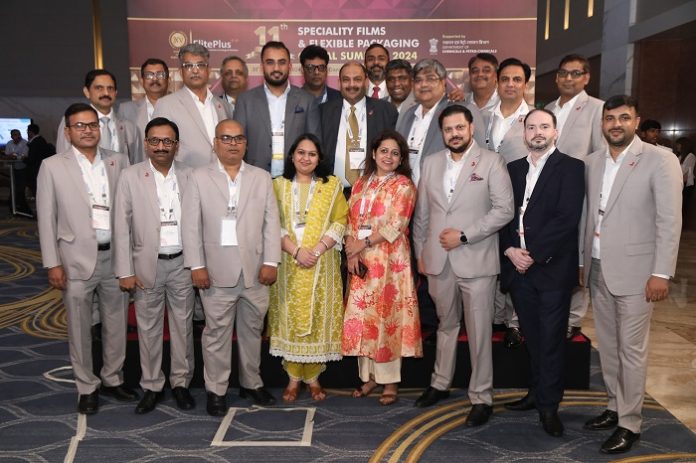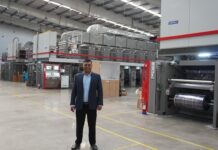Kunal Bajaj, director of the Jupiter Group, a fast-growing flexible packaging converter headquartered in the Delhi-NCR, addressed some of the challenges the industry faces, at the recent ElitePlus conference in Mumbai. Jupiter is a one-stop flexible packaging materials provider for brands such as ITC, Kellogg’s, Marico, DS Group, Haldiram’s, KRBL, Britannia, Pepsico, Nestle, Paper Boat, Tata Coffee, Veeba and Godrej. Its manufacturing facilities are spread over 250 acres in various parts of India.
According to Bajaj, there are around 10,000 converters worldwide, of which around 150 are sizable, with the rest being small in both the organized and unorganized sectors. The global flexible packaging market was valued at US$ 248.9 billion in 2022, he said, adding it is expected to grow to US$ 315.5 billion by 2027 with a CAGR of 4.8% between 2022 and 2027. According to him, flexible packaging in India will increase by US$ 15.50 billion with a CAGR of 13% from 2023 to 2008 with a Y-o-Y growth of 12.04%.
The capacity for flexible packaging manufacturing in India has increased significantly over the past four years reflecting in a 12% capacity addition between 2020 and 2025, he said, adding India’s 11 kg annual per capita consumption of plastics is expected to rise to between 16 to 20 kilograms per capita with the global average already at 28 kg per annum. Although not all of this consumption is packaging, the packaging industry in India as in most parts of the world represents the most substantial share.
Bajaj said that while the food and beverage segment provides 50 to 60% of the flexible packaging market in India, personal care and household products contribute 20 to 25%, while the remaining 10 to 12% is with the pharma segment. “Convenience, sustainability, and personalization are the key drivers that influence the flexible packaging industry in India and have a major impact on fluctuations in both demand and supply. While the demand factors include population growth, urbanization, eCommerce, and new product categories; raw material availability, manufacturing capacity, and technology advancements make up the supply factors.”
Looking at the challenges for converters, he cited rising raw material costs, lack of business visibility, sustainability, global uncertainties, skilled labor shortages, regulatory compliances, financial pressures, technological advancements, high competition, and low margins. Bajaj suggested that for the industry to grow it needs to incorporate digitalization, take part in localization or make-in-India initiatives, adopt global standards, and invest in research and development, especially for sustainable packaging innovations. “Digitalization can help with optimized production processes, customization, and personalization, supply chain optimization, enhanced customer engagement, and quality control,” he said.
He pointed out that in 2022, global R&D spending reached approximately US$ 2.5 trillion in the search for innovations in materials, sustainability, and technology, while the Indian packaging industry’s R&D spend is 0.36% of its sales. He added that a healthier allocation of R&D expenditure will lead to the introduction of new materials and other tech advancements.
For innovation in sustainable packaging, brand owners need to redesign and rethink packaging. “They, we need to use PCR PET for packaging, switch to monomaterials, and encourage the use of circular plastics, he said. “Further, the Indian packaging industry should have a set of global standards for the entire value chain of flexible packaging. Just like Gold has a Hallmark and packaged foods have FSSAI licenses in India, packaging material must have a certification to ensure the quality of the laminate,” Bajaj emphasized. “The Pollution Control Board has already mandated the inclusion of a PCB number in all packaging in the country.”
While importing raw materials has become difficult, developing local sources of raw materials is the need of the hour. “The Indian government should provide better platforms, subsidies, and ease of doing business to promote foreign investments to encourage global manufacturers and investors to set up their manufacturing units in India,” he added.











